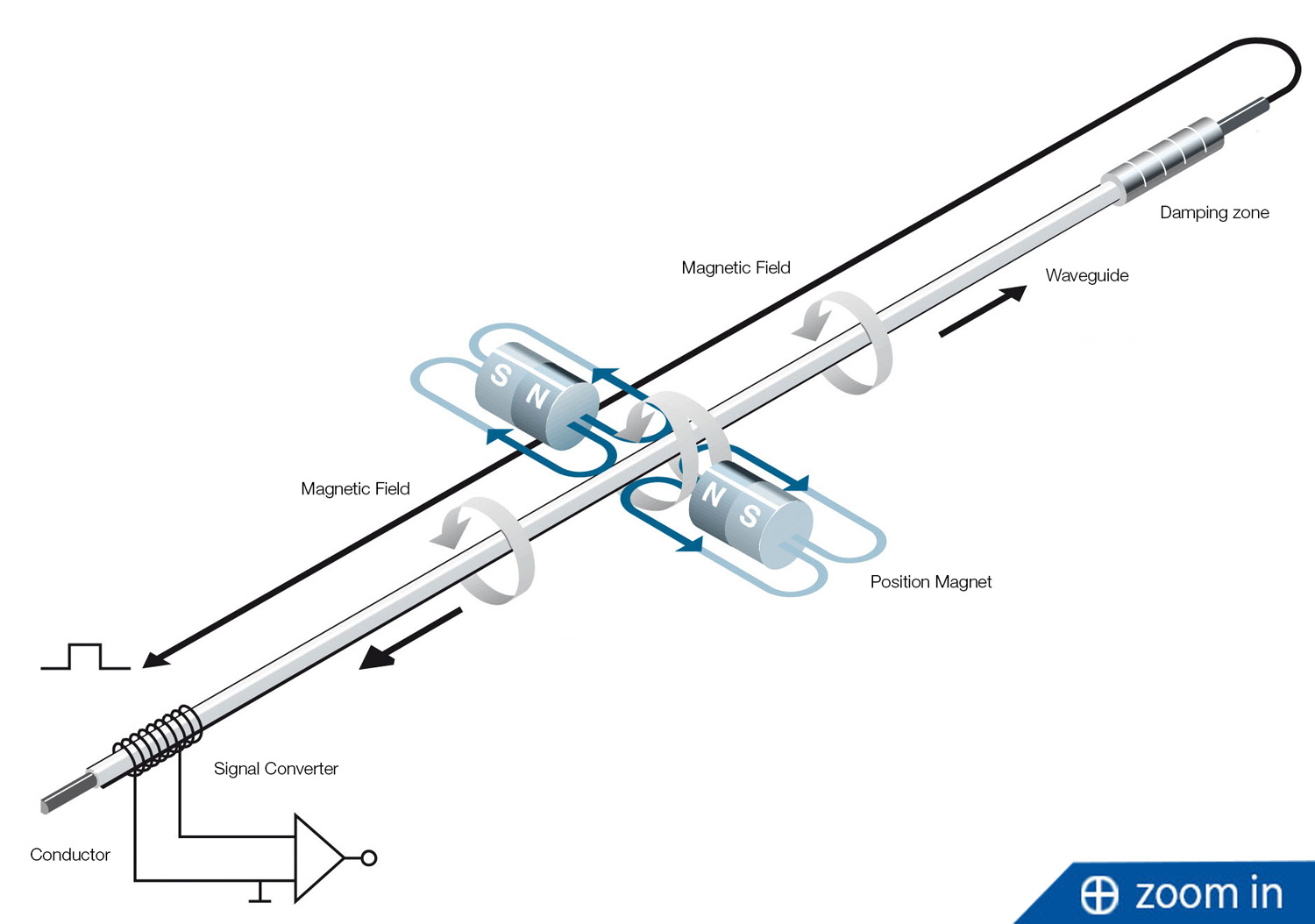How magnetostrictive sensors work
Magnetostrictive sensors are characterized by high reliability and precision in position and speed
measurement. They can be installed in hermetically sealed housings as they transmit the current position
information via magnetic fields contactlessly through the housing wall to the internal magnetostrictive
sensor element. Thanks to their high resistance to shock and vibration, they are suitable for heavy
machinery and plant construction.
The sensor element – the waveguide – is a metallic tube made of magnetostrictive material into which a copper conductor is threaded.
The sensor element – the waveguide – is a metallic tube made of magnetostrictive material into which a copper conductor is threaded.

Design principle of magnetostrictive sensors
During the measuring process, the excitation current pulse induces a circular
magnetic field, which is bundled thanks to the soft magnetic properties of the waveguide.
A permanent magnet (in the illustration called position magnet) which is mounted on the moving component to
be measured, serves as a passive position sensor. At the measuring point, both magnetic fields overlap at
right angles and deform the waveguide minimally by magnetostriction. The elastic deformation generates a
mechanical wave that propagates to both sides at 2,850 metres per second. The induction coil at one end of
the waveguide converts the mechanical wave into a current pulse so that the evaluation electronics can
precisely determine the position on the basis of the wave propagation time. At the other end of the
waveguide, a damping element prevents disturbing reflections of the mechanical wave.
▪
Author: Dr. Detlef Zienert, Press Relations Manager, Balluff GmbH


